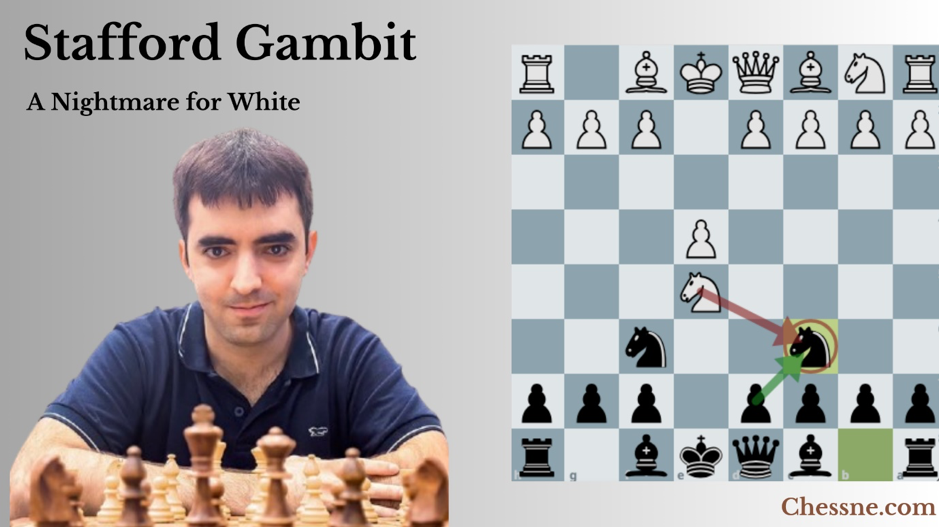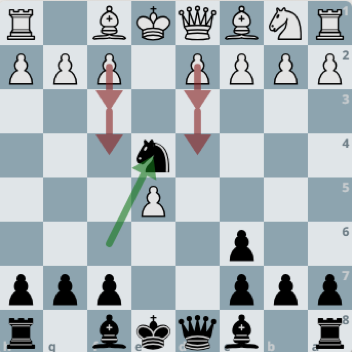
Have you ever wanted to wreck your opponent while playing black side? Everyone knows that white holds a slight advantage because it always moves first. However, if you study this opening in detail, it can slaughter the players from beginner to intermediate level.
This opening has experienced a significant surge in popularity over the past decade and is beloved by many players. A big shoutout goes to International Master Eric Rosen, who has done an awesome job explaining how to master it. The opening usually leads to a chaotic situation for white, making it challenging for them to avoid errors. Even minor mistakes can result in a material advantage or the loss of major pieces, significantly increasing your chances of winning.
This could be one of the most effective ways to learn how to think critically, learn tactical patterns, and avoid such tricky situations when playing as white.
Pros and Cons
- Pros:
- Can lead to quick wins
- Teaches you how to think critically
- Fun and challenging
- Cons:
- Risky
- Works mostly for bullets/quick games
Steps to Trap your Opponent in Stafford Gambit:
This guide will focus on the key lines and variations of the Stafford Gambit you will most likely encounter. Once you grasp these variations, jump into a game to sharpen your skills! To improve, practice with your coach or online and explore all the variations.
Starting with Petrov’s Defence:
1) Enabling Petrov’s Defence

→ 1. e4 e5 2. Nf3 Nf6 3. Nxe5 Nc6 4. Nxc6 dxc6
To enter in Stafford mode, you need to have a Petrov’s Defence position as seen in the first image. This defense offers a free pawn at e5 to be taken by threat Nf3.
Once your opponent captures the free pawn, you offer a knight trade by playing Nc6. This is the key moment because after your opponent captures your knight, the Stafford gambit is accepted. On the board, the situation gets very sensitive for white as one slight mistake will favor black to win easily.
2) Variation 1: Road to Quickest Checkmate – (Queen Sacrifice)

→ (Stafford Position) 5. d3 Bc5 6. Bg5 Nxe4 7. Bxd8 Bxf2+ 8. Ke2 Bg4#
Right after getting in such a position, the most common move is d3 because white needs to defend its unsupported pawn. The best move here for black is to attach white’s kingside such as Bc5.
This is the moment when most players on the white side choose to go aggressive, a decision that proves to be a mistake and you will see why.
Black plays Nxe4, which initially seems to be a major blunder since the queen is left exposed and the knight is also threatened by d3. However, this is actually a brilliant move that sets black up for victory if the queen is captured. White falls into the trap, and black responds with the surprising Bxf2+, delivering a check to the king. White has no choice but to move Ke2, allowing Black to force checkmate with Bg4#.
3) Variation 2: White Plays e5 instead of d3

→ (Stafford Position) 5. e5 Ne4
If White plays e5, Black’s best move is Ne4. This is a powerful move, as it forces White to either defend the unprotected e5 pawn or attack the knight while Black applies pressure. However, this is where White often makes mistakes. If White attempts to protect the passed pawn with d4 or f4 or tries to attack the knight with d3 or f3, they end up putting themselves in a significantly losing position.
Below is why:

d4: Black plays Qh4 and white responds with g3, putting pressure on the queen, but this is a mistake because the knight can capture it immediately. This puts White in a tough spot: capturing the knight with the h2 pawn exposes the rook to the queen, while using the f2 pawn allows Black to play Qe+,checking the king and capturing the rook anyway.
f4: Black can still play Qh4+, creating a similar situation but even more advantageous for Black, as it’s a check and forces White to respond with g3. If White tries to avoid it by moving the king to e2, they will face checkmate in just a few moves.
f3: Black can respond in the same way Qh4+, forces White to respond with g3, and captures the rook in the same way.

d3: Black cannot play Qh4 because the knight is under threat, no king checks to support the knight. However, this is still a significant mistake by White. Black can respond with Bc5, applying pressure to White’s kingside. But wait! The knight is left undefended. White captures the knight with dxe4, but then Black plays Bxf2+, delivering a check to the king. White is forced to capture the bishop, and on the next move, Black takes the queen!
Should You Play It?
The decision of whether or not to play this gambit is a personal one. If you are a confident player who enjoys aggressive openings and play in a challenging manner then regardless if you are new to chess or someone experienced, it might be the best choice!
“The Stafford Gambit is all about creating chaos on the board. It is a fun and tricky opening that can lead to quick and unexpected victories if your opponent is not prepared.”
IM Eric Rosen